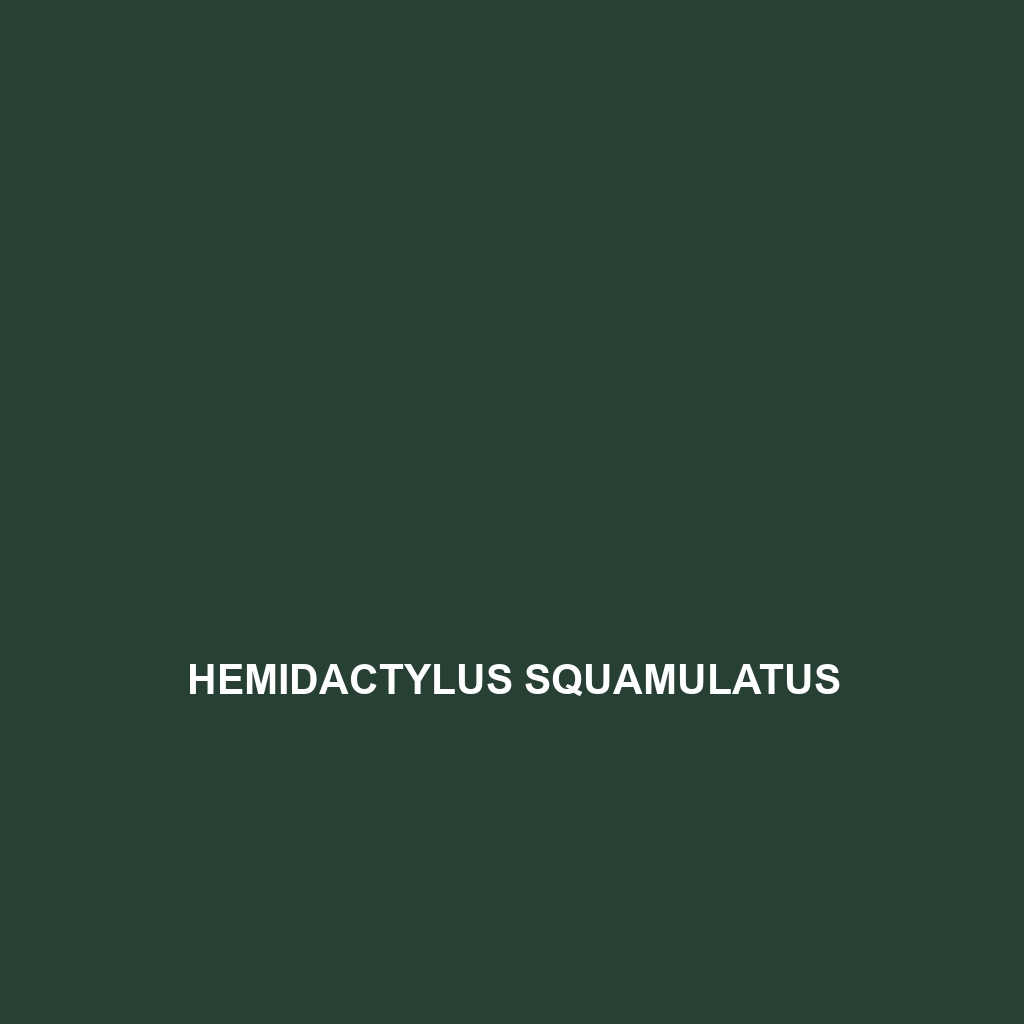Common Name
Hemidactylus somalicus
Scientific Name
Hemidactylus somalicus
Habitat
The Hemidactylus somalicus, commonly known as the Somali house gecko, thrives primarily in the arid and semi-arid landscapes of Somalia. This species is predominantly found in a variety of habitats, including savannas, rocky outcrops, and human-inhabited areas, such as homes and buildings. The geographic distribution of the Somali house gecko allows it to occupy regions characterized by a warm climate, often exhibiting low annual rainfall. Its prevalence in urban areas signifies its adaptability to environmental conditions disrupted by human activity. Furthermore, its preference for warm surfaces, especially during nighttime, makes this gecko a common sight in areas with high temperatures.
Physical Characteristics
Hemidactylus somalicus reaches an average length of about 10 to 15 centimeters. Its body is slender and elongated, enabling it to navigate through narrow crevices effectively. The coloration varies from light tan to grayish-brown, often adorned with darker spots or mottles which provide excellent camouflage against rocky backgrounds. Notable features include its adhesive toe pads, which aid in climbing and allow it to traverse vertical surfaces effortlessly. Additionally, its large, rounded eyes are adapted for nocturnal activity, providing superior night vision that contributes to its hunting efficiency.
Behavior
This gecko exhibits primarily nocturnal behavior, becoming active during the night when it hunts for prey. Its social interactions can vary; while it is often solitary, it may sometimes be observed in small groups when competing for food resources. Mating rituals involve elaborate displays and pheromone signaling to attract females. During the day, Hemidactylus somalicus can often be found basking on warm surfaces, which aids in maintaining its body temperature and energy levels for nocturnal hunts.
Diet
Hemidactylus somalicus is primarily an insectivore, feeding on a diverse diet that includes crickets, moths, and other small invertebrates. Its feeding patterns are opportunistic, often hunting in areas with abundant insect populations. This adaptability allows the Somali house gecko to thrive even in anthropogenic environments, where it commonly seeks food around lights that attract insects. Occasionally, it may display omnivorous tendencies, consuming plant matter and decaying organic materials when insect prey is scarce.
Reproduction
The reproductive cycle of Hemidactylus somalicus typically occurs during the warmer months, with mating often peaking in the late spring and early summer. Females are oviparous, laying 1 to 2 eggs per clutch, which are usually deposited in sheltered locations such as crevices or under loose debris. The incubation period lasts approximately 30 days, after which hatchlings emerge fully formed and capable of independent survival. Parental care is minimal; however, some female geckos may defend their nests against potential threats during the incubation period.
Conservation Status
Currently, Hemidactylus somalicus is classified as of least concern according to the IUCN Red List. Despite its stable population across its native range, habitat destruction due to urbanization and agricultural expansion poses potential threats in the future. Conservation efforts may be required to monitor populations in specific locales, especially as climate change continues to impact the ecosystems where these geckos reside.
Interesting Facts
One striking fact about Hemidactylus somalicus is its remarkable ability to regenerate lost tails, a common adaptation among geckos that provides a survival advantage against predators. This species is also known for its ability to produce loud vocalizations to communicate, particularly during mating seasons. Furthermore, their existence in human-dominated structures highlights their beneficial role in controlling insect populations, making them valuable allies in urban pest management.
Role in Ecosystem
Hemidactylus somalicus plays a crucial role in its ecosystem as both a predator and prey species. By feeding on insects, it contributes to regulating arthropod populations, which can have cascading effects on local ecosystems. Its presence in human habitats showcases its adaptability and ecological significance, as it helps control pests. Moreover, as a prey item for larger predators, such as birds and mammals, it contributes to the food web, ensuring the balance of ecological interactions within its habitat.
